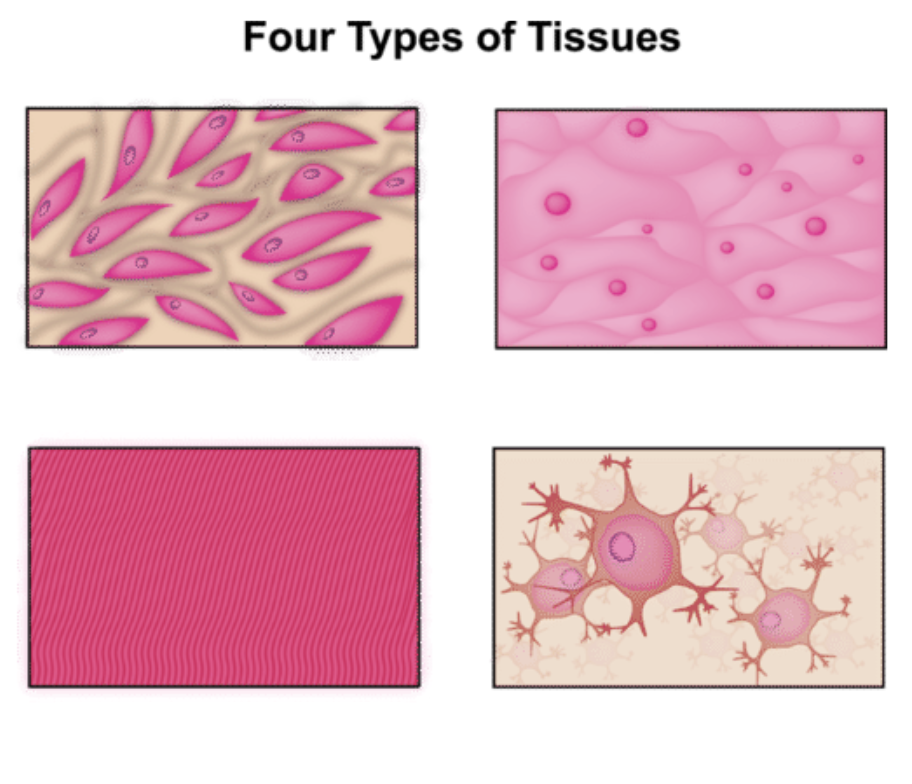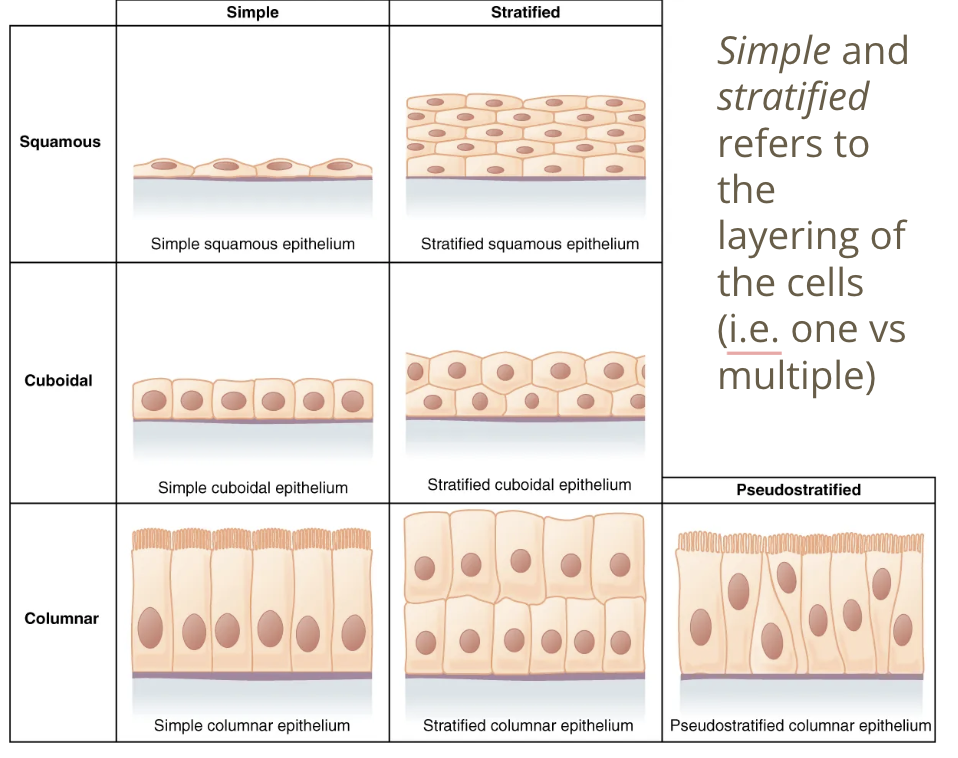animal tissue
1/8
There's no tags or description
Looks like no tags are added yet.
Name | Mastery | Learn | Test | Matching | Spaced |
|---|
No study sessions yet.
9 Terms
Tissues
Composed of a group of specialized cells working together
4 main types:
Connective
Muscle
Epithelial
Nervous

Connective tissue
Cells held together by a matrix (liquid, solid, or gel)
Found in bones, blood, ligaments, tendons, and cartilage
Functions of connective tissue
Supports structures in the body
Protects structures in the body
Binds structures together in the body
Stores fat
Transports nutrients and wastes (through blood)
Helps repair tissue damage
Muscle tissue
Cardiac muscle - found in the heart
Skeletal muscle - attached to bones
Smooth muscle - found in walls of internal organs
Functions of muscle tissue
Movement
Posture
Joint stability
Heat production
Storing and moving substances
Epithelial tissue
Lines organs and your body (i.e. skin)
Three types:
Squamous - plate-like cells
Cuboidal - cubic cells
Columnar - elongated cells

Functions of epithelial tissue
Protects structures
Secretes mucus
Absorbs minerals and nutrients
Filtering
Diffusion
Sensory reception
Nervous tissue
Found in nerves and the brain
Cells are often long with branches to help conduct electrochemical signals
Functions of nervous tissue
Responding to stimuli
Coordinating and controlling body functions
Communicating within the body